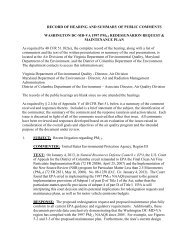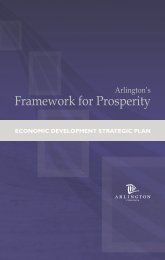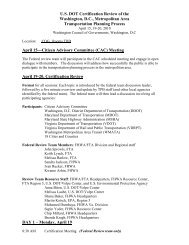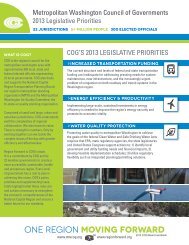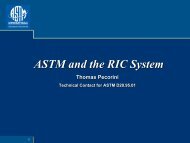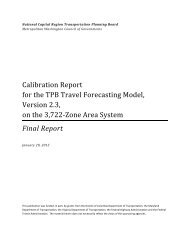PTI Local Government Energy Assurance Guidelines - Metropolitan ...
PTI Local Government Energy Assurance Guidelines - Metropolitan ...
PTI Local Government Energy Assurance Guidelines - Metropolitan ...
Create successful ePaper yourself
Turn your PDF publications into a flip-book with our unique Google optimized e-Paper software.
Appendix E. Additional Agencies and<br />
Organizations Relevant to the <strong>Energy</strong><br />
<strong>Assurance</strong> Planning Process<br />
Some of these agencies and organizations may not be on the local EAP list of Primary Contacts, but familiarity<br />
with their roles and responsibilities and the resources they can provide may be beneficial to the EAP process. It may<br />
be useful to develop relationships with these entities if they are relevant to local planning efforts and if doing so is<br />
feasible, given time and other constraints.<br />
Federal Agency Contacts<br />
■ ■<br />
■■<br />
■■<br />
■■<br />
■■<br />
U.S. Department of Agriculture (USDA)<br />
The U.S. Department of Agriculture is best accessed via the State’s agriculture agency. Relevant Agriculturerelated<br />
issues include propane for crop drying, protecting livestock, and supporting accurate weights and<br />
measures. In addition, the Rural Utilities Service (RUS) is housed at USDA. RUS is responsible for funding<br />
and tracking energy consumption information for rural electric cooperatives (http://www.usda.gov/rus/).<br />
U.S. Department of Commerce (DOC)<br />
The U.S. Department of Commerce has excellent data resources for developing emergency plan<br />
demographics. Within DOC, the National Oceanic & Atmospheric Administration (NOAA) provides up-tothe-minute<br />
tracking for hurricanes, wildfires, winter storms, and other weather-related emergencies (http://<br />
www.noaa.gov).<br />
U.S. Department of the Interior (DOI)<br />
Within DOI, the Bureau of Ocean <strong>Energy</strong> Management, Regulation and Enforcement (BOEMRE) oversees<br />
the oil and gas production fields in the Gulf of Mexico (http://www.boemre.gov/).<br />
U.S. Environmental Protection Agency (EPA)<br />
The U.S. Environmental Protection Agency should be contacted through the State’s environmental agency.<br />
EPA may need to be contacted if waivers are sought for fuels that do not meet national and local air quality<br />
requirements. A fuel waiver can be issued only when the criteria specified in the Clean Air Act Section 211(c)<br />
(4) (C) have been met. In general, these criteria allow a fuel waiver only to address a temporary emergency<br />
fuel supply shortage that exists throughout a State or region that was caused by an unusual situation such as<br />
an act of God, and that could not have been avoided by prudent planning.<br />
U.S. Department of Transportation (DOT)<br />
The U.S. Department of Transportation has several sub-agencies that may relate to an energy emergency,<br />
including the Pipeline and Hazardous Materials Safety Administration (PHMSA). PHMSA rules apply to<br />
inter- and intra-State pipelines. State regulations for natural gas generally reinforce the Federal requirements.<br />
The State’s PUC is ordinarily the primary point of contact in the event of a pipeline problem. If the loss of gas<br />
is sufficiently severe, State and local governments should anticipate a coordinated response through the State<br />
emergency operations center.<br />
<strong>Local</strong> <strong>Government</strong> <strong>Energy</strong> <strong>Assurance</strong> <strong>Guidelines</strong> – Version 2.0 | 93



